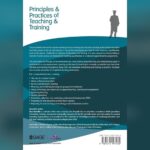
How to Become a Public Speaking Pro: Master Your Stage Skills
Are you tired of feeling your heart race and your palms sweat at the thought of speaking in front of an audience? Imagine transforming that fear into confidence, and those nerves into excitement.
Public speaking is a skill that can open doors to new opportunities, boost your career, and help you connect with others on a deeper level. The best part? Anyone can master it with the right approach and mindset. In this guide, you’ll discover the secrets to becoming a compelling public speaker.
You’ll learn how to captivate any audience, deliver your message with clarity, and leave a lasting impression. Ready to unlock the power of your voice and make an impact? Let’s dive in and turn your public speaking dreams into reality.

Crafting Your Message
Crafting your message is crucial in public speaking. A well-crafted message captivates your audience. It ensures your key points resonate and are remembered. This process involves careful thought and organization. Let’s delve into how to craft an impactful message.
Identifying Key Points
Begin with your main topic. What do you want to communicate? Identify three to five key points. These should support your main idea. Make each point clear and concise. This helps the audience follow your message easily.
Focus on simplicity. Avoid technical jargon. Use words your audience understands. This keeps them engaged and ensures clarity.
Structuring Your Speech
Structure your speech like a story. Start with an engaging introduction. Grab attention quickly. Introduce your main idea early. The body should contain your key points. Present them logically and sequentially. This aids comprehension.
Conclude with a strong closing. Reinforce your main idea. Leave your audience with a lasting impression. Use a memorable statement or call to action.
Practice makes perfect. Rehearse your speech multiple times. This boosts confidence and ensures smooth delivery.
Overcoming Stage Fright
Stage fright is a common hurdle for anyone stepping onto a podium. The fear of speaking in public can be intimidating, but it’s not insurmountable. With the right techniques, you can transform nervous energy into confident delivery.
Embracing Nervousness
Nervousness is a natural response to stepping into the spotlight. Instead of fighting it, acknowledge it. Everyone, even seasoned speakers, experience it. The key is to understand that nervousness doesn’t mean you’re unprepared or incapable.
Use this energy to fuel your performance. Channel it into enthusiasm and passion for your topic. Let your audience see your excitement and they’ll connect with you. Remember, it’s okay to be nervous—it shows that you care.
Techniques For Relaxation
Relaxation begins with breathing. Slow, deep breaths can calm your racing heart and steady your voice. Try inhaling deeply through your nose, holding for a moment, and exhaling slowly through your mouth.
Visualization is another effective technique. Picture yourself succeeding on stage. Imagine the audience responding positively. This mental rehearsal can build your confidence and ease your nerves.
Practice is powerful. The more you rehearse, the more comfortable you’ll feel. Consider practicing in front of friends or recording yourself. It’s a great way to spot areas for improvement and get used to the sound of your voice.
What steps will you take to transform your stage fright into stage might? It’s time to embrace your nervousness and step into the spotlight with confidence.
Engaging Your Audience
Engaging your audience is the cornerstone of effective public speaking. It’s not enough to stand on stage and deliver information; you need to connect with your listeners on a deeper level. Think about what makes you lean forward in your seat during a talk. It’s usually the speaker’s ability to make you feel like part of the conversation. To achieve this, you need to master the art of building rapport and using humor effectively.
Building Rapport
Building rapport with your audience starts before you even step on stage. Research your audience to understand their interests, concerns, and expectations. Tailor your message to resonate with them. Picture yourself speaking to friends rather than strangers. This mindset helps you relax and appear more approachable.
Once on stage, eye contact is your best friend. It shows you care about your audience’s reactions. Tell a personal story that relates to your topic. Share a moment when you faced a challenge similar to theirs. It makes you relatable and opens a channel for empathy. Ask questions to encourage interaction and make your audience feel involved.
Using Humor Effectively
Humor can be a powerful tool if used wisely. It’s not about making your audience laugh at every turn. It’s about lightening the mood and making your presentation memorable. Share a funny anecdote that ties into your message. It relaxes the atmosphere and keeps people attentive.
Be cautious with jokes. What’s funny to one person might be offensive to another. Keep your humor inclusive and relevant to your topic. Use self-deprecating humor sparingly. It shows humility and makes you more relatable. Remember, your aim is to engage, not to distract. A well-timed humorous comment can reinvigorate your audience’s attention.
Have you ever sat through a talk where the speaker made you feel like you were the only person in the room? That’s the power of engagement. Keep these strategies in mind, and watch your audience’s interest soar. How will you captivate your next audience?
Enhancing Vocal Delivery
Enhancing vocal delivery is crucial for impactful public speaking. Your voice carries your message. It influences how your audience perceives your content. A strong vocal delivery can captivate listeners and emphasize key points. Improving tone, pitch, and the strategic use of pauses can make a significant difference. Let’s explore how to refine these vocal elements.
Mastering Tone And Pitch
Your tone sets the mood of your speech. A warm tone can engage your audience. A neutral tone may convey facts or information. Pitch adds variation to your delivery. It helps maintain interest and emphasizes important points. Practice altering your pitch during different parts of your speech. This makes your message more dynamic and engaging.
Focus on your emotions when adjusting tone and pitch. Share excitement with a higher pitch. Convey seriousness with a lower tone. Record your practice sessions. Listen to the playback. Identify areas to improve. Experiment with different tones and pitches. Find what resonates best with your audience.
Utilizing Pauses
Pauses give your audience time to absorb information. They create suspense and emphasize key points. A well-timed pause can strengthen your message. Plan your pauses during speech preparation. Avoid rushing through your presentation. Slow down and insert pauses naturally.
Practice using pauses in various parts of your speech. Let them highlight critical ideas. Pauses can also help control nervousness. They provide moments to breathe and refocus. Listen to experienced speakers. Observe how they use pauses effectively. Mimic their techniques to enhance your own delivery.
Utilizing Body Language
Effective body language enhances public speaking skills. Confidence shines through a strong posture. Gestures emphasize key points and engage your audience. Eye contact builds connection and trust. Practice these elements to captivate listeners and convey messages clearly.
Mastering public speaking involves more than just choosing the right words. Your body language plays a crucial role in how your message is received. It can either enhance your speech or distract from it. Knowing how to effectively use body language can elevate your presentation skills and help you connect with your audience on a deeper level.
Confident Posture
Standing tall with your shoulders back exudes confidence. It tells your audience you are sure of yourself and what you have to say. When I first started public speaking, I noticed that maintaining a strong posture helped calm my nerves. Consider this: would you trust a speaker who slouches and fidgets? A confident posture not only improves your credibility but also boosts your own confidence. Take a deep breath, stand firm, and let your body language speak volumes before you even utter a word.
Purposeful Gestures
Gestures can be powerful tools in storytelling. They emphasize key points and help illustrate your message. Have you ever noticed how a well-timed hand movement can draw you into a speaker’s narrative? But be mindful. Random flailing can be distracting. Your gestures should be deliberate and meaningful. Practice using gestures in front of a mirror to ensure they align with your message. Think about your audience. Are your gestures helping them understand better? Or are they left wondering what you’re trying to convey? Use your hands to guide them through your speech, making your delivery more engaging and memorable.
Managing Stage Dynamics
Confidence grows with practice. Observe audience reactions and adjust your tone. Use clear body language to engage listeners effectively.
Managing stage dynamics is crucial for effective public speaking. It involves understanding how to use the space and equipment available to enhance your delivery. Mastering these elements can transform your presentation from good to unforgettable.
Navigating Space
The stage is your canvas. Use it to paint a picture that complements your message. Move deliberately to engage different sections of the audience. Consider standing still when making a key point. This can emphasize the importance of your words. Walking around casually can make your presentation feel more conversational. Experiment with positioning to see what feels natural. Practicing in the actual space beforehand can be helpful. This allows you to identify potential obstacles and plan your movements.
Handling Equipment
Equipment can be your best friend or your worst enemy on stage. Familiarize yourself with the microphone, projector, and any other tech you’ll be using. Test everything in advance. A quick sound check can prevent major mishaps. Adjust the microphone to the right height to avoid hunching or stretching during your talk. Think about how you’ll transition between slides if using a presentation. Will you use a clicker, or will someone else handle it? Knowing these details can help you maintain a smooth flow. Have you ever had a mic cut out mid-sentence? It’s a speaker’s nightmare, but being prepared with a backup plan can save the day.
Handling Audience Interaction
Handling audience interaction is a crucial skill for public speakers. Engaging with your audience can transform your presentation from a monologue into a dynamic conversation. It can also build rapport and keep your audience attentive. However, it requires skill to respond effectively to questions and manage any disruptions. Let’s dive into how you can master these essential aspects.
Responding To Questions
Questions from your audience can be a great opportunity to clarify your points and engage deeper. Listen carefully to each question. It shows respect and helps you understand the context. Respond concisely and directly.
Avoid long-winded answers that might confuse your audience. If you don’t know the answer, admit it honestly. Suggest resources or offer to follow up. This builds trust and shows you value their inquiry.
Consider your tone and body language. Smile and maintain eye contact. This can make your response more personal and approachable. Have you ever asked a question and felt ignored? Avoid that pitfall by acknowledging every question with enthusiasm.
Dealing With Disruptions
Disruptions can range from a ringing phone to a loud side conversation. Stay calm and composed. It’s essential to address the disruption without losing your audience’s focus. Pause if necessary, then proceed confidently.
Engage the disruptor politely. You might say, “I’ll address that in a moment,” or “Could you please hold that thought?” This shows respect and keeps your presentation on track. Have you ever been interrupted and felt flustered? Practice will make it easier to handle these moments smoothly.
Set clear ground rules at the beginning of your talk. Encourage questions at specific intervals to minimize interruptions. This helps maintain a structured flow and sets expectations. What strategies have you tried to keep disruptions at bay?
Mastering audience interaction can elevate your public speaking skills. Use these practical tips to respond confidently and manage disruptions effectively. As you refine your approach, you’ll find your presentations become more engaging and impactful.
Continuous Improvement
Continuous improvement is crucial in public speaking. Every speaker can enhance their skills. It’s a journey of learning and refining. Constant growth leads to better presentations and audience engagement.
Seeking Feedback
Feedback is a powerful tool for improvement. Ask trusted peers for their thoughts. They can provide insights on your delivery. Notice their suggestions and work on them. Constructive criticism helps you understand your strengths and weaknesses. Use this information to shape your next speech.
Practicing Regularly
Practice makes perfect. Regular speaking hones your skills and builds confidence. Create a schedule to practice consistently. Focus on different aspects each time you rehearse. Try varying your tone, pace, and body language. The more you practice, the more natural you become. This habit leads to mastery over time.
Frequently Asked Questions
How Can I Improve My Public Speaking Skills?
Improving public speaking skills involves practice and preparation. Start by understanding your audience and crafting clear messages. Practice regularly in front of a mirror or with friends. Record yourself to identify areas for improvement. Joining a public speaking group, like Toastmasters, can provide valuable feedback and experience.
What Are Common Public Speaking Fears?
Common fears include forgetting your speech, audience judgment, and stage fright. These fears are normal but can be managed. Prepare thoroughly and practice relaxation techniques, like deep breathing. Visualize success to build confidence. Engaging with your audience can also help distract from nervousness and make the experience more enjoyable.
Why Is Public Speaking Important?
Public speaking is crucial for personal and professional growth. It enhances communication skills and boosts confidence. Public speaking also helps in networking by allowing you to share ideas effectively. It builds leadership qualities and enables you to inspire and influence others, making it an essential skill in many careers.
How Do I Structure A Public Speech?
A well-structured speech has an introduction, body, and conclusion. Start with a strong opening to grab attention. Organize the body into clear, logical points. Use transitions to connect ideas smoothly. Conclude with a memorable ending that reinforces your message. Practice makes perfect, so rehearse your structure multiple times.
Conclusion
Becoming a public speaker takes time and practice. Start small and build confidence. Practice speaking in front of friends or family. Use clear language and make eye contact. Focus on your message and keep it simple. Record yourself to spot areas for improvement.
Learn from feedback and keep refining your skills. Embrace your unique style and voice. Remember, everyone can improve with effort. Don’t be afraid to make mistakes. They are part of the learning process. Keep practicing, stay patient, and watch your skills grow.
Public speaking can be your strength with dedication.





